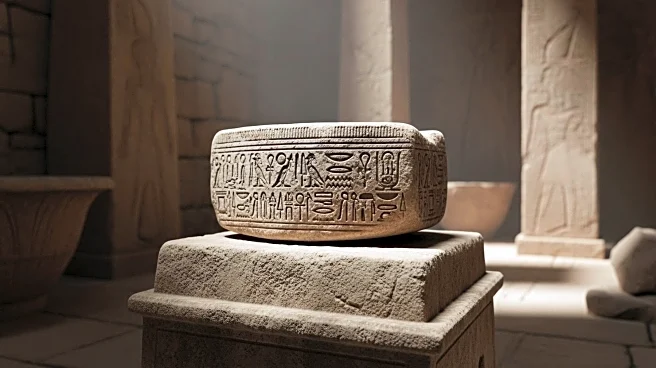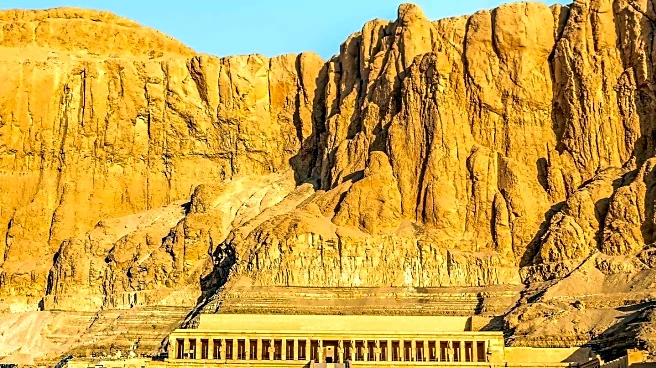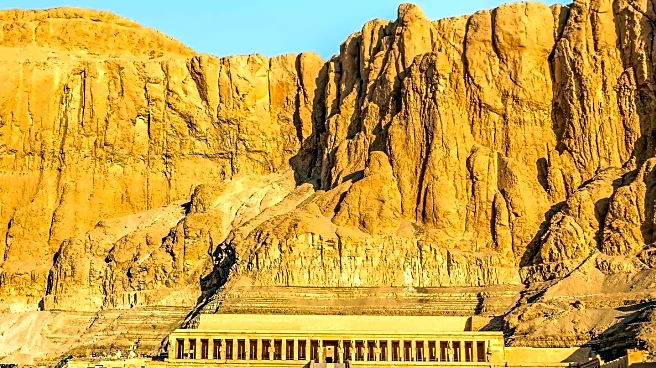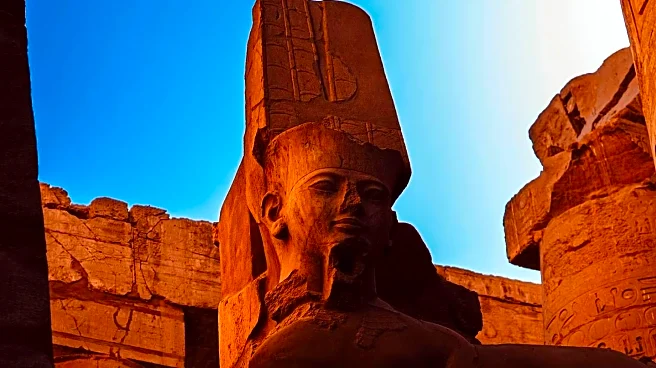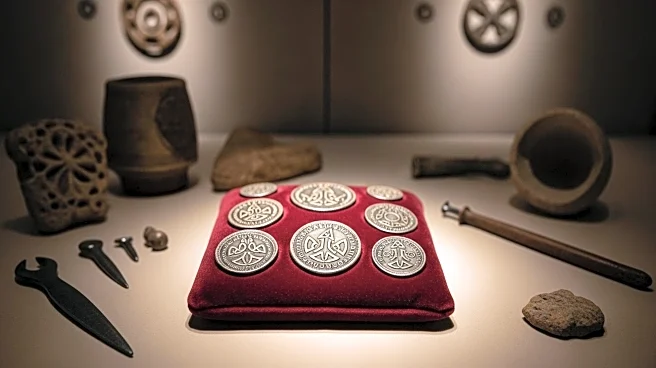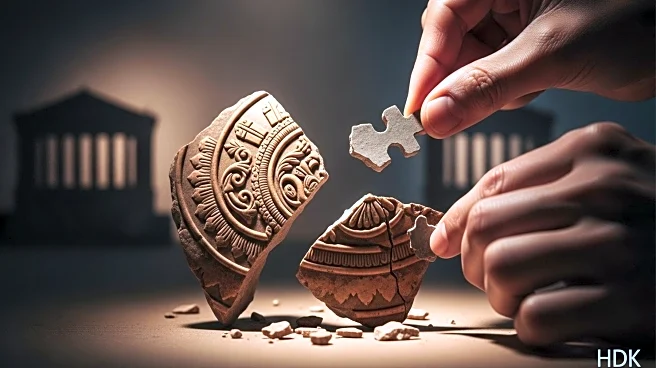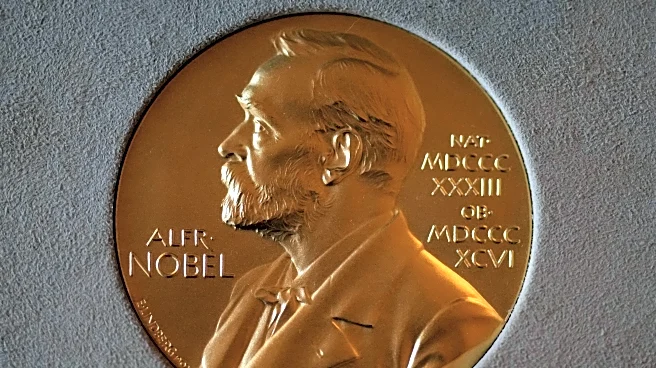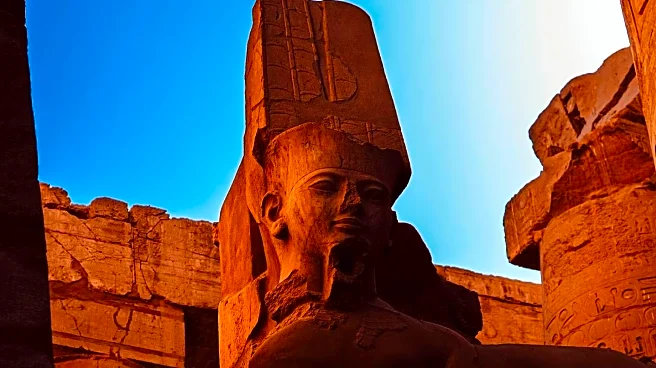What's Happening?
A team of researchers, including Binghamton University archaeologist Carl Lipo, has confirmed that the ancient people of Rapa Nui moved their iconic moai statues by 'walking' them. This was achieved using a combination of physics, 3D modeling, and field experiments. The study, published in the Journal of Archaeological Science, reveals that the statues were moved in a zig-zag motion using ropes, challenging previous theories that suggested they were transported lying down. The research involved creating high-resolution 3D models of the statues and conducting experiments with a replica to demonstrate the feasibility of this method.
Why It's Important?
This discovery sheds light on the engineering prowess of the Rapa Nui people, highlighting their ability to achieve monumental feats with limited resources. It challenges long-held theories about the transportation of the moai and provides a scientific basis for understanding the methods used by ancient civilizations. The findings honor the ingenuity of the Rapa Nui people and offer insights into sustainable engineering practices that could be relevant today. The research also contributes to the broader understanding of human history and the capabilities of ancient societies.
What's Next?
The research invites further exploration and validation of the 'walking' theory, encouraging other scholars to test and potentially challenge these findings. It opens up new avenues for archaeological research on Easter Island and similar ancient sites. The study may also inspire modern engineers and historians to apply these ancient techniques to contemporary challenges, promoting a deeper appreciation for historical ingenuity.
Beyond the Headlines
The study emphasizes the importance of evidence-based research in archaeology, countering speculative theories with scientific validation. It highlights the cultural significance of the moai and the roads built by the Rapa Nui, which were integral to the statue-moving process. This research underscores the value of interdisciplinary approaches, combining archaeology, physics, and engineering to solve historical mysteries.

